Age-related muscle loss and its associated decrements in muscle strength and function are well documented, yet there have been very few solutions until now. New research suggests that plyometric training significantly reduces the risk of age-related muscle loss (termed sarcopenia), and relieves some of its associated negative effects such as loss of muscle tone, strength and function (Franchi, 2019).
It sounds easy—add plyometric drills to active-aging programs and the dilemma of age-related muscle loss is solved. The problem, of course, is that it’s not at all simple. As people age, they lose muscle mass and also tend to develop osteoarthritis, which affects bone, joint, tendon and ligament health, making jumping uncomfortable or even unsafe.
The question is, how do we get around the dilemma of age-related osteoarthritis so we can use plyometric training with active agers? First, it is important to understand how the research on plyometric training with aging adults was collected and what they found.
The Research
When researchers set out to determine if plyometric training would positively impact age-related muscle loss, the first thing they did was to develop a safer mode of plyometric training, one that was suitable to a group of aging participants (Franchi, 2019). To achieve that goal, they developed a device similar to a leg-press machine, where the exercisers use their legs to bounce their body weight off of a trampoline. The device is similar to a leg press in its use of hip and knee flexion and extension; it differs in that the user is positioned on an incline to the trampoline (seated upright and coming down on top of the trampoline rather than a sled coming down on the exerciser at a decline or a machine leg press in which the legs are extended directly out in front of the body). It is important to note that the exercise equipment used in this study is not currently available to the general public.
The goal of the study was to examine the effects of a six-week plyometric training program on knee extensor (quadriceps) muscle size and power. Fourteen young men with an average age of 25 years were compared to nine older men with an average age of 70 years. Each person trained three times per week; however, the training volume differed between the age groups:
- The young group completed four sets of 30 repetitions each for the first four weeks, followed by five sets of 30 repetitions for the final two weeks.
- The older group performed three sets of 30 repetitions for the first four weeks, followed by four sets of 30 repetitions for the final two weeks.
The training volumes differed between the two groups because the pilot study showed that the training volume for the younger group of men caused too much fatigue in the older group.
To determine if the plyometric training was effective, researchers measured pre- and post-training variables in the quadriceps muscle. They found that plyometric training resulted in increased muscle mass and power in both young and older men.
The results of the study are not surprising, as muscle mass and power are the result of improved performance of type II muscle fibers, which plyometric training is known to target. Sarcopenia is a direct result of a loss of type II fibers, along with other factors. It is good news that aging muscle can respond quickly to plyometric training; however, the problem is applying the research to the general public in a traditional fitness setting where the research equipment is not available and safety is paramount.
Training Suggestions for Active Agers
To get clients started, try these strategies:
- Strengthen the muscles that originate in the hips, including the gluteals, quadriceps, hamstrings and hip abductors. In addition to being the largest muscles in the body, they are used in traditional lower-body plyometric drills and play a significant role in balance that is required for plyometrics.


GLUTE BRIDGE - Strengthen the core muscles.


PLANK TUCKS
Lower-body plyometric drills require strength and balance and produce a lot of impact forces. As such, they may not be a good place to start. Instead, choose low-intensity upper-body plyometric exercises such as:
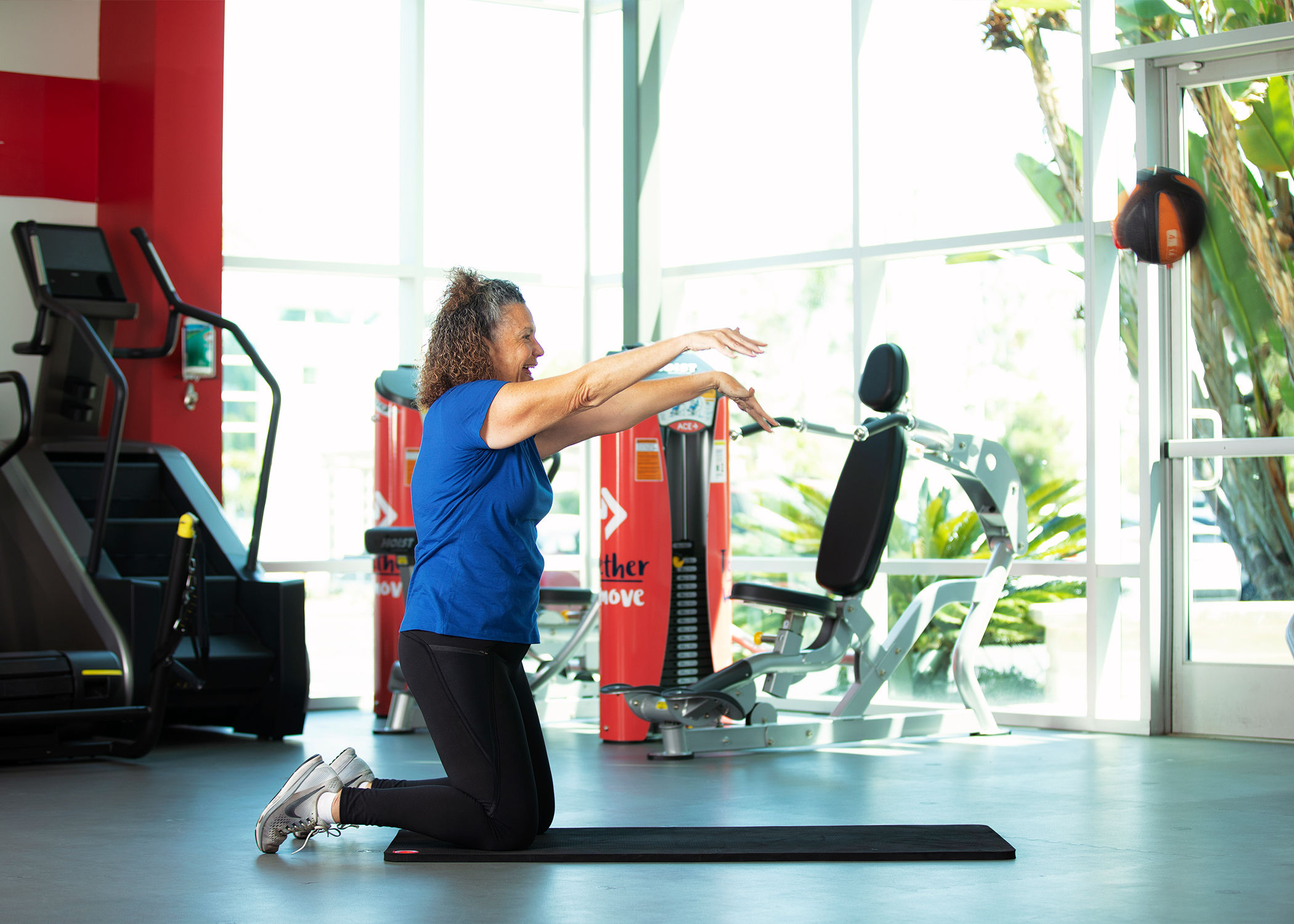
KNEELING POWER BALL PASS 
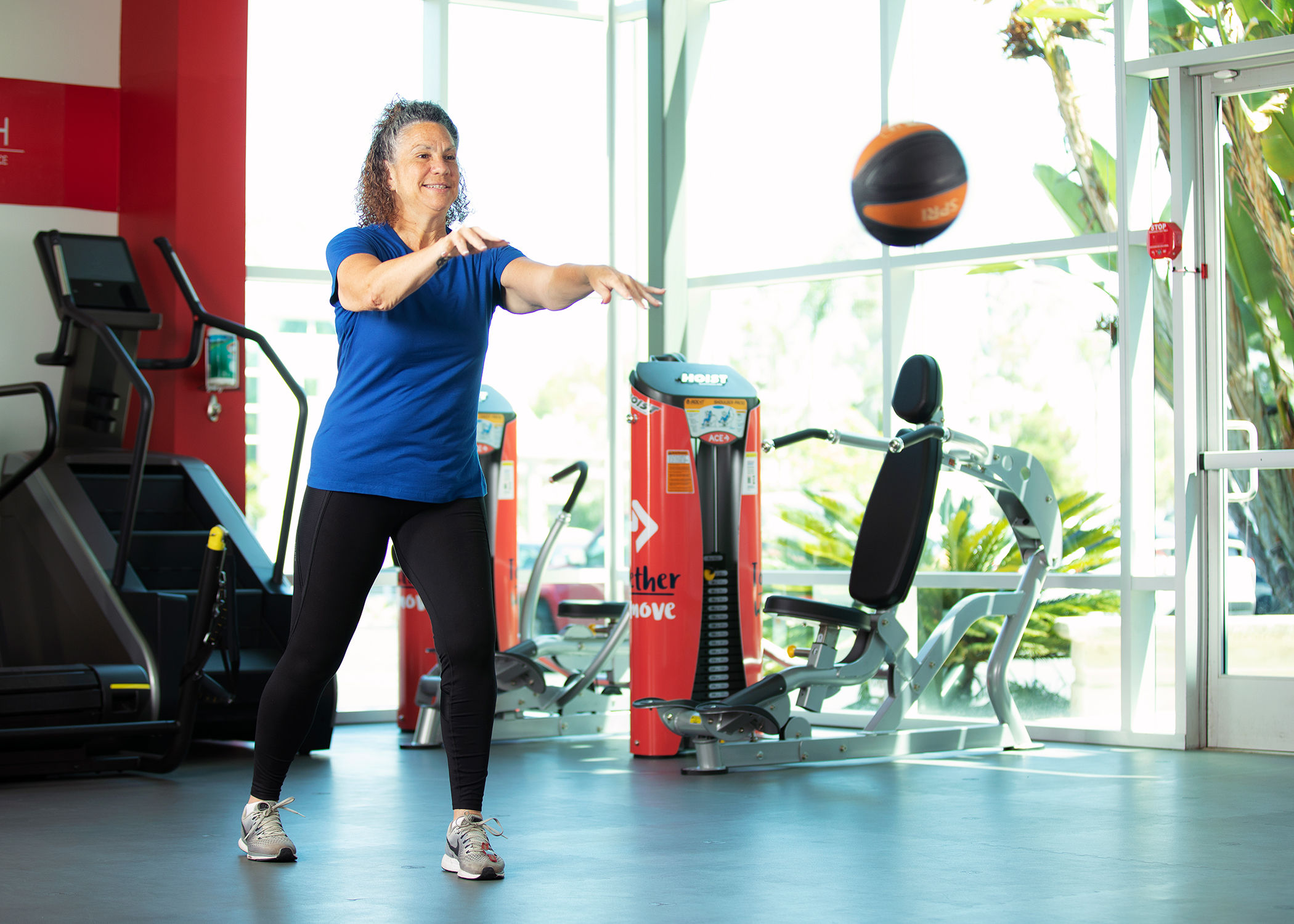
MEDICINE BALL CHEST PASS
Once lower-body strength has been developed and balance is not an issue, start with a small range of motion jump squat or jump-and-reach drills:
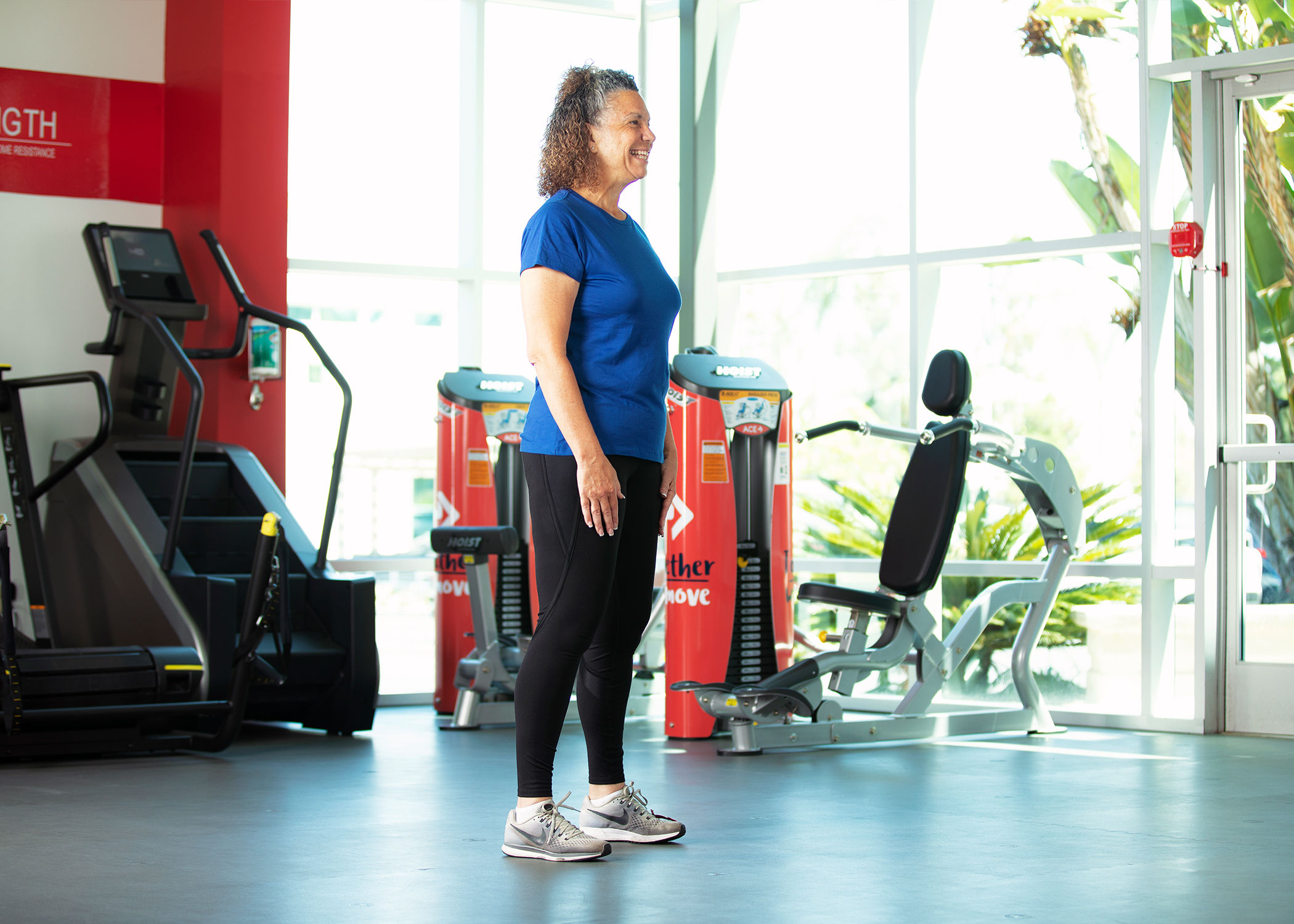

SQUAT 
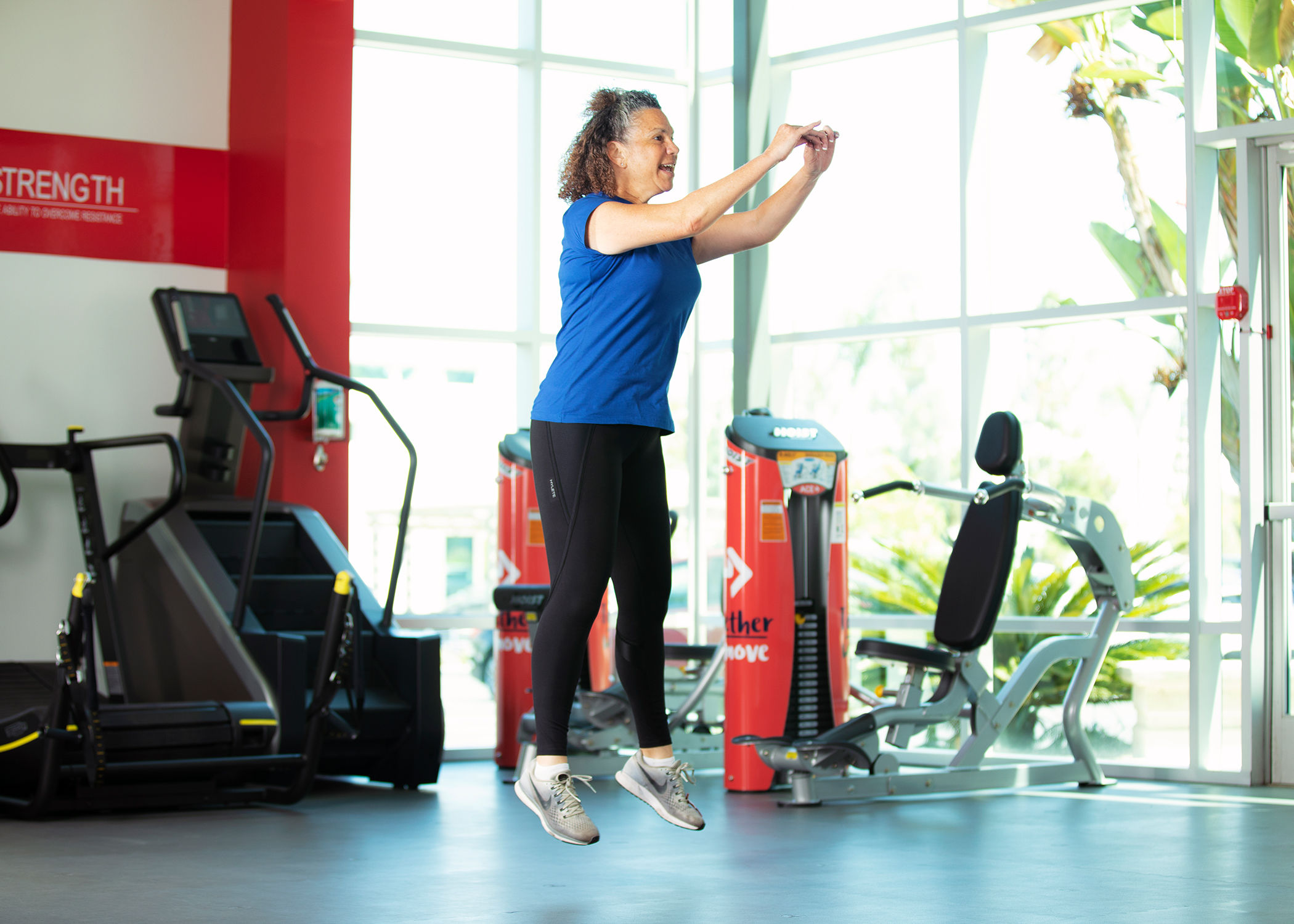
JUMP SQUAT

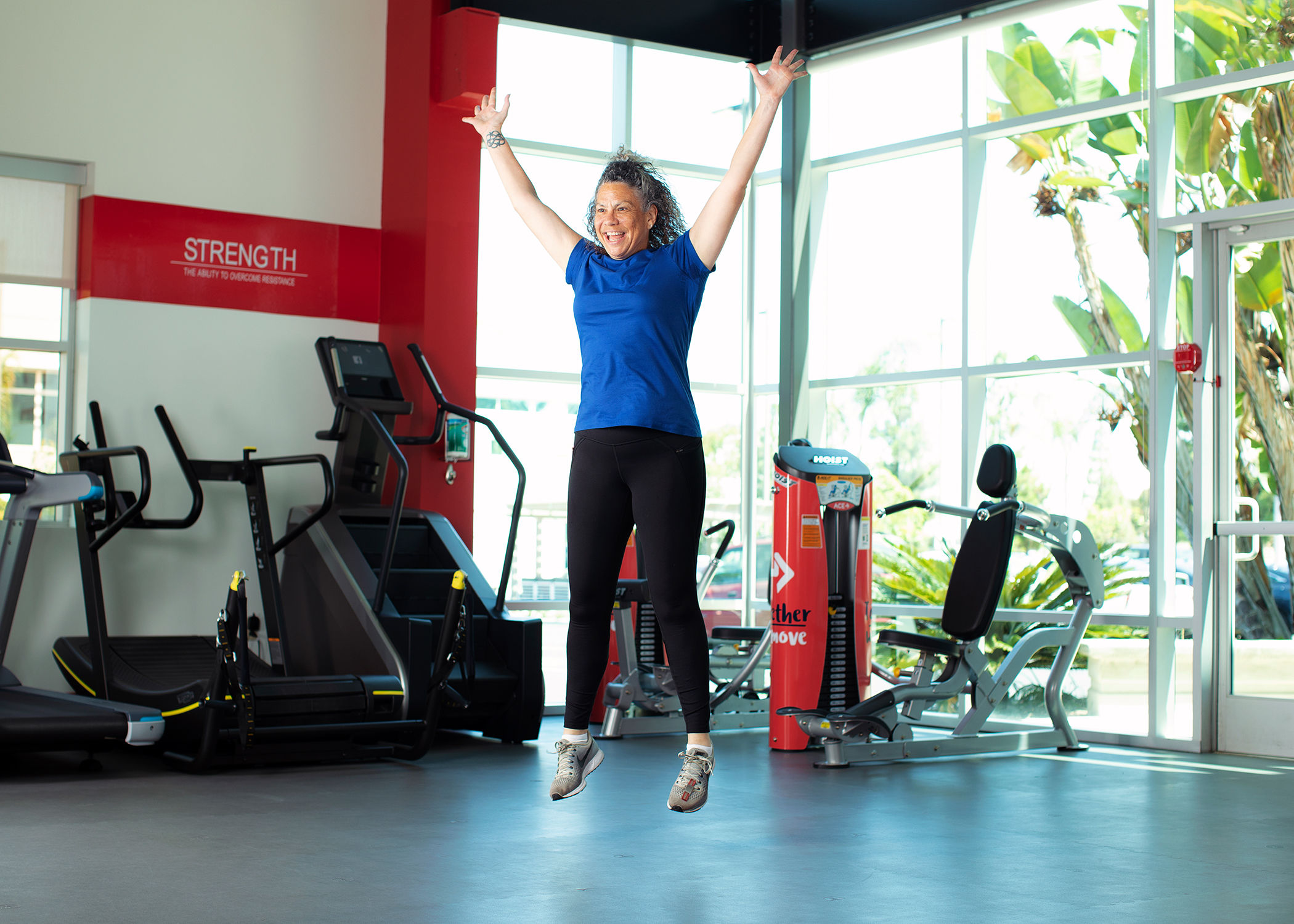
JUMP AND REACH
Suggested Workout
|
Exercise |
Sets |
Reps |
Between-set rest break |
|
Medicine ball chest-pass training* |
3** |
15 |
60 seconds to two minutes |
*When determining the weight of the medicine ball, keep in mind that the ball must be heavy enough to slow the exercise, but not so heavy that it will reduce the range of motion or make it difficult for the client to comfortably control the ball for at least five repetitions.
**To progress, after two weeks, add a fourth set of 15 repetitions.
Plyometric training can reduce the likelihood and extent of age-related muscle loss and decrements in function; however, care must be taken to ensure client readiness. The best practice is to start out with strength and balance-building exercises for the lower body, incorporate upper-body plyometrics where appropriate and progress accordingly with lower-body drills.
Reference
Franchi, M.V. et al. (2019). Bouncing back! Counteracting muscle aging with plyometric muscle loading. Frontiers in Physiology, 5, 10, 178.
Want to learn how to take your clients’ fitness to the next level with emerging strength training science? Enroll in Amy Ashmore's Programming for Strength Gains course at ACE!




 by
by 











 by
by